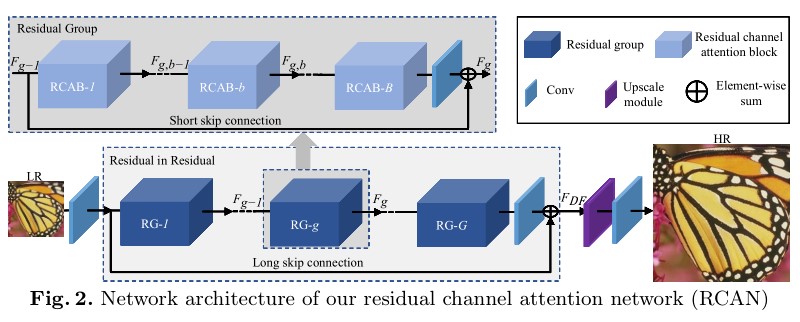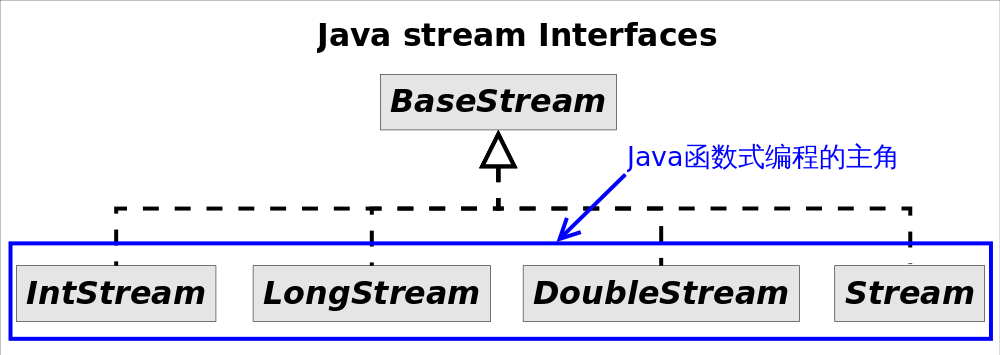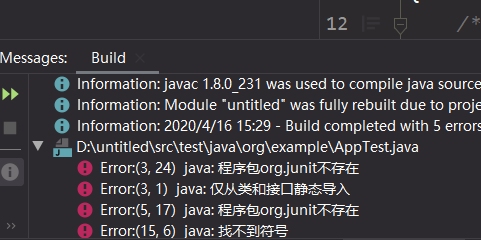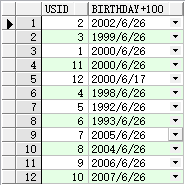UVA 1103 Ancient Messages
题目链接:https://vjudge.net/problem/UVA-1103
题目大意
给定一张关于古代象形文字的 01 点阵图(输入以十六进制表示),判断图中有哪些象形文字,并按字典序输出。
分析
居然是按洞的多少来区别象形文字的,我也是服了,dfs 裸题。
代码如下


1 #include <bits/stdc++.h>2 using namespace std;34 #define INIT() ios::sync_with_stdio(false);cin.tie(0);cout.tie(0);5 #define Rep(i,n) for (int i = 0; i < (int)(n); ++i)6 #define For(i,s,t) for (int i = (int)(s); i <= (int)(t); ++i)7 #define rFor(i,t,s) for (int i = (int)(t); i >= (int)(s); --i)8 #define ForLL(i, s, t) for (LL i = LL(s); i <= LL(t); ++i)9 #define rForLL(i, t, s) for (LL i = LL(t); i >= LL(s); --i)10 #define foreach(i,c) for (__typeof(c.begin()) i = c.begin(); i != c.end(); ++i)11 #define rforeach(i,c) for (__typeof(c.rbegin()) i = c.rbegin(); i != c.rend(); ++i)1213 #define pr(x) cout << #x << " = " << x << " "14 #define prln(x) cout << #x << " = " << x << endl1516 #define LOWBIT(x) ((x)&(-x))1718 #define ALL(x) x.begin(),x.end()19 #define INS(x) inserter(x,x.begin())20 #define UNIQUE(x) x.erase(unique(x.begin(), x.end()), x.end())21 #define REMOVE(x, c) x.erase(remove(x.begin(), x.end(), c), x.end()); // 删去 x 中所有 c22 #define TOLOWER(x) transform(x.begin(), x.end(), x.begin(),::tolower);23 #define TOUPPER(x) transform(x.begin(), x.end(), x.begin(),::toupper);2425 #define ms0(a) memset(a,0,sizeof(a))26 #define msI(a) memset(a,0x3f,sizeof(a))27 #define msM(a) memset(a,-1,sizeof(a))2829 #define MP make_pair30 #define PB push_back31 #define ft first32 #define sd second3334 template<typename T1, typename T2>35 istream &operator>>(istream &in, pair<T1, T2> &p) {36 in >> p.first >> p.second;37 return in;38 }3940 template<typename T>41 istream &operator>>(istream &in, vector<T> &v) {42 for (auto &x: v)43 in >> x;44 return in;45 }4647 template<typename T>48 ostream &operator<<(ostream &out, vector<T> &v) {49 Rep(i, v.size()) out << v[i] << " \n"[i == v.size() - 1];50 return out;51 }5253 template<typename T1, typename T2>54 ostream &operator<<(ostream &out, const std::pair<T1, T2> &p) {55 out << "[" << p.first << ", " << p.second << "]" << "\n";56 return out;57 }5859 inline int gc(){60 static const int BUF = 1e7;61 static char buf[BUF], *bg = buf + BUF, *ed = bg;6263 if(bg == ed) fread(bg = buf, 1, BUF, stdin);64 return *bg++;65 }6667 inline int ri(){68 int x = 0, f = 1, c = gc();69 for(; c<48||c>57; f = c=='-'?-1:f, c=gc());70 for(; c>47&&c<58; x = x*10 + c - 48, c=gc());71 return x*f;72 }7374 template<class T>75 inline string toString(T x) {76 ostringstream sout;77 sout << x;78 return sout.str();79 }8081 inline int toInt(string s) {82 int v;83 istringstream sin(s);84 sin >> v;85 return v;86 }8788 //min <= aim <= max89 template<typename T>90 inline bool BETWEEN(const T aim, const T min, const T max) {91 return min <= aim && aim <= max;92 }9394 typedef unsigned int uI;95 typedef long long LL;96 typedef unsigned long long uLL;97 typedef vector< int > VI;98 typedef vector< bool > VB;99 typedef vector< char > VC;100 typedef vector< double > VD;101 typedef vector< string > VS;102 typedef vector< LL > VL;103 typedef vector< VI > VVI;104 typedef vector< VB > VVB;105 typedef vector< VS > VVS;106 typedef vector< VL > VVL;107 typedef vector< VVI > VVVI;108 typedef vector< VVL > VVVL;109 typedef pair< int, int > PII;110 typedef pair< LL, LL > PLL;111 typedef pair< int, string > PIS;112 typedef pair< string, int > PSI;113 typedef pair< string, string > PSS;114 typedef pair< double, double > PDD;115 typedef vector< PII > VPII;116 typedef vector< PLL > VPLL;117 typedef vector< VPII > VVPII;118 typedef vector< VPLL > VVPLL;119 typedef vector< VS > VVS;120 typedef map< int, int > MII;121 typedef unordered_map< int, int > uMII;122 typedef map< LL, LL > MLL;123 typedef map< string, int > MSI;124 typedef map< int, string > MIS;125 typedef multiset< int > mSI;126 typedef multiset< char > mSC;127 typedef set< int > SI;128 typedef stack< int > SKI;129 typedef deque< int > DQI;130 typedef queue< int > QI;131 typedef priority_queue< int > PQIMax;132 typedef priority_queue< int, VI, greater< int > > PQIMin;133 const double EPS = 1e-8;134 const LL inf = 0x7fffffff;135 const LL infLL = 0x7fffffffffffffffLL;136 const LL mod = 1e9 + 7;137 const int maxN = 2e2 + 7;138 const LL ONE = 1;139 const LL evenBits = 0xaaaaaaaaaaaaaaaa;140 const LL oddBits = 0x5555555555555555;141142 int T, N, M;143 int bitArr[maxN][maxN];144 mSC ans;145 int dx[] = {-1, 0, 1, 0};146 int dy[] = {0, -1, 0, 1};147 map< int, char > dict = {PII(1, 'A'), PII(3, 'J'), PII(5, 'D'), PII(4, 'S'), PII(0, 'W'), PII(2, 'K')};148149 // 把与bitArr[x][y] = 0联通的联通 0 区域全部置为-1150 void dfs1(int x, int y) {151 bitArr[x][y] = -1;152153 Rep(i, 4) {154 int newX = x + dx[i];155 int newY = y + dy[i];156157 if(!BETWEEN(newX, 0, N + 1) || !BETWEEN(newY, 0, M + 1) || bitArr[newX][newY] != 0) continue;158 dfs1(newX, newY);159 }160 }161162 // 把与bitArr[x][y] = 1联通的联通 1 区域全部置为-1,并返回0联通区数量163 int dfs2(int x, int y) {164 int ret = 0;165 bitArr[x][y] = -1;166167 Rep(i, 4) {168 int newX = x + dx[i];169 int newY = y + dy[i];170171 if(!BETWEEN(newX, 0, N + 1) || !BETWEEN(newY, 0, M + 1)) continue;172 if(bitArr[newX][newY] == 1) {173 ret += dfs2(newX, newY);174 }175 else if(bitArr[newX][newY] == 0) {176 dfs1(newX, newY);177 ++ret;178 }179 }180 return ret;181 }182183 void print() {184 For(i, 1, N) {185 For(j, 1, M) {186 if(bitArr[i][j] != -1) cout << bitArr[i][j];187 else cout << " ";188 }189 cout << endl;190 }191 }192193 int main() {194 //freopen("MyOutput.txt","w",stdout);195 //freopen("input.txt","r",stdin);196 //INIT();197 while(cin >> N >> M && N) {198 ms0(bitArr);199 ans.clear();200 For(i, 1, N) {201 Rep(j, M) {202 int x;203 scanf("%1x", &x);204205 For(k, 1, 4) {206 bitArr[i][(j << 2) + (5 - k)] = ((x & (1 << (k - 1))) != 0);207 }208 }209 }210 M <<= 2;211212 dfs1(0, 0);213214 For(i, 1, N) {215 For(j, 1, M) {216 if(bitArr[i][j] < 0) continue;217 int ret = dfs2(i, j);218 ans.insert(dict[ret]);219 }220 }221222 printf("Case %d: ", ++T);223 for(auto x : ans) cout << x;224 printf("\n");225 }226 return 0;227 }
转载于 //www.cnblogs.com/zaq19970105/p/11398539.html
//www.cnblogs.com/zaq19970105/p/11398539.html



































还没有评论,来说两句吧...